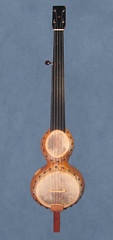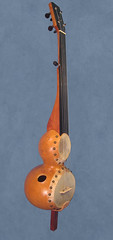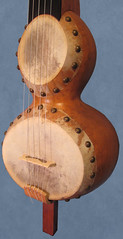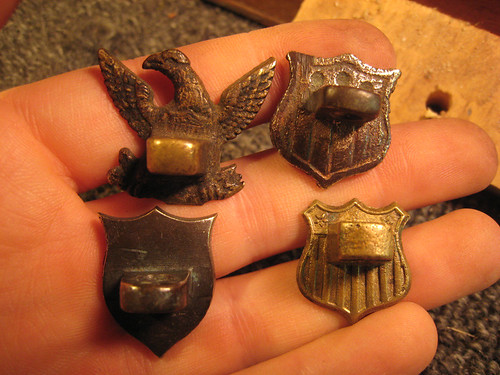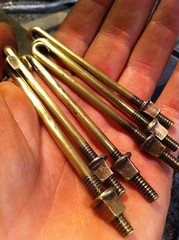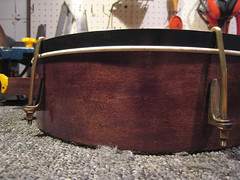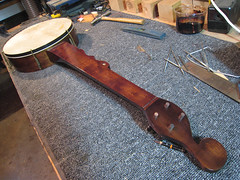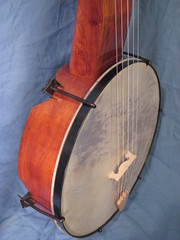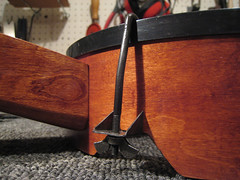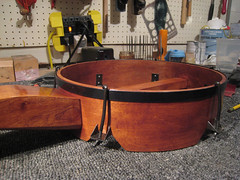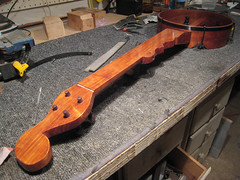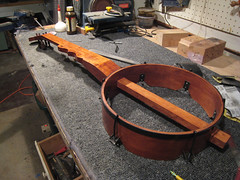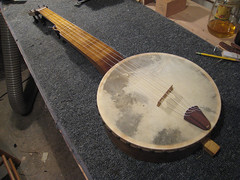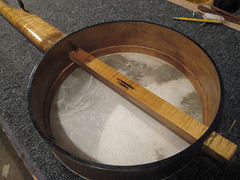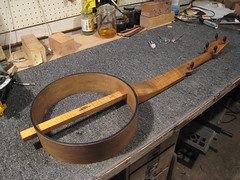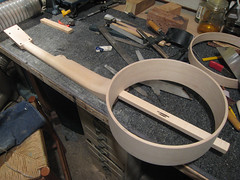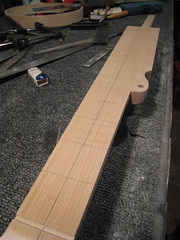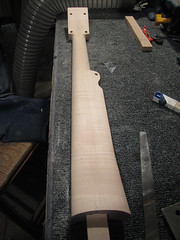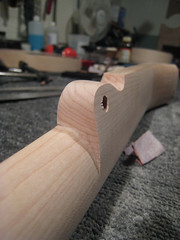Tuesday, October 18, 2011
The last several weeks have been spent in Vermont, working with Will Fielding, and then back in my shop, doing some significant retooling for some new kinds of projects. I've been doing tons of brass casting for new hardware, and a lot of planning in general. There will be many new and exciting projects in the coming year.
Monday, October 03, 2011
Saturday, August 13, 2011
Today I visited Peter Szego's house. He is the co-author of "America's Instrument," and has amassed perhaps the finest private collection of early American banjos and guitars in this country. An amazing day of stringed instruments!
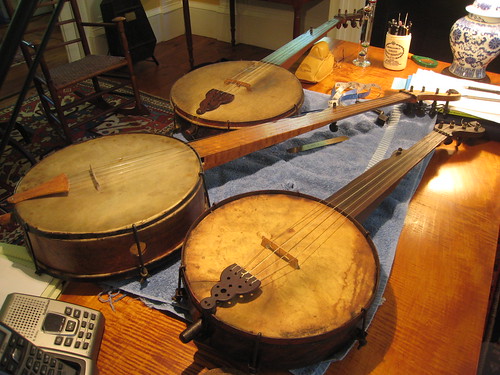
Above: a standard open-back Boucher, a double-tension model, and a mini-Boucher

Above: a standard open-back Boucher, a double-tension model, and a mini-Boucher
Tuesday, August 02, 2011
Sunday, July 24, 2011
Monday, July 18, 2011
Thursday, June 30, 2011
Custom-cast brass hardware is finally here! I just did a run of federal shield brackets and hooks, and some different kinds of Boucher-style bracket shoes (for single and double-tension models). In the photo below, the shoe, hook, and nut on the right is the original ca. 1870 hardware, and on the left is my reproduction, along with one of the single-tension Boucher shoes.


Tuesday, May 10, 2011
Work is currently underway on several instruments, including a copy of an early Boucher double-tension banjo in birdseye maple. All hardware will be custom made, including the tension hoop with brackets peened onto it, and custom-cast brass nuts.
I am also casting a few different early federal shield brackets directly from originals that date from the 1860s through 1880s for future projects.
If you're interested in minstrel banjos with hardware other than the standard flat, Boucher-style shoes, now is the time to get in touch.
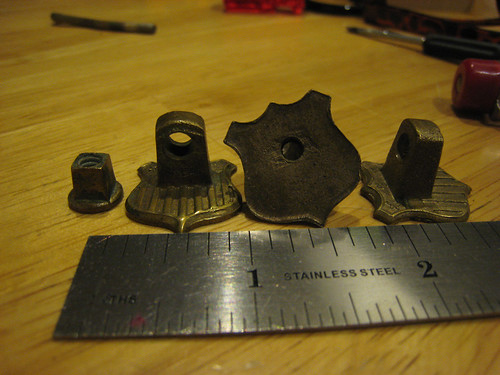
I am also casting a few different early federal shield brackets directly from originals that date from the 1860s through 1880s for future projects.
If you're interested in minstrel banjos with hardware other than the standard flat, Boucher-style shoes, now is the time to get in touch.

Tuesday, April 05, 2011
Ok, I hadn't realized that all of the individual pages in the gallery were corrupted during the server move. If you use Safari, you will not have been able to access any of these pages for at least a month. Those pages have all been repaired. If you are using Safari, please clear your cache so you can now view those pages, along with two new banjo entries to the gallery that were just updated.
Sunday, March 20, 2011
Friday, March 04, 2011
Sunday, February 27, 2011
Friday, February 18, 2011
Things have been busy as always in the shop. On of my most often-used tools, my band saw, died on me. I had been using a cheap Chinese saw for quite some time, and finally decided to move forward. And by forward I mean, as usual, backwards--a couple weeks ago I was able to pick up a Delta 14" drill press and band saw, both from 1947, both manufactured in the USA, and both made out of 100% real metal (not pot metal, not plastic). The band saw required extensive restoration, including all new bearings, tires, wheel shims, rust removal, paint, etc. The drill press was more or less ready to go.
Here are some before-and-after of the restoration process
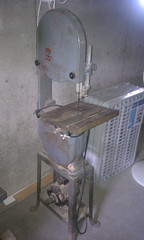
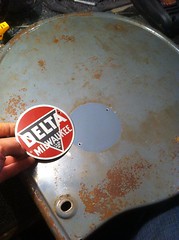
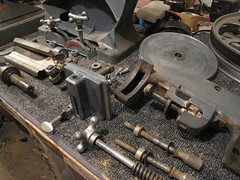
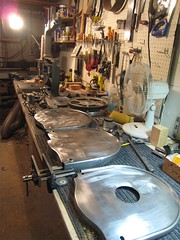
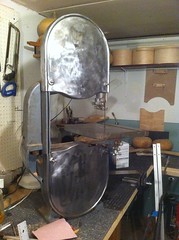
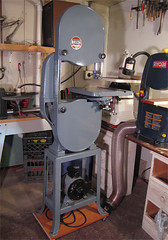
The website might be a little screwy going forward. I just suffered a complete hard drive meltdown, and hadn't been backing up as vigilantly as I should have been. Lesson learned. Back up and running now, and back in the shop working on banjos again.
Here are some before-and-after of the restoration process






The website might be a little screwy going forward. I just suffered a complete hard drive meltdown, and hadn't been backing up as vigilantly as I should have been. Lesson learned. Back up and running now, and back in the shop working on banjos again.
Thursday, January 13, 2011
Monday, January 10, 2011
Friday, January 07, 2011

In June of 2010 a major storm passed through Northern Indiana. It felled trees and power lines and caused significant property damage. On one 20-acre lot over 60 trees of various species were felled by strong winds, including cherry, ash, maple, and walnut trees. One of the mills I work with handled the clean up of that lot. Rather than chipping the trees or cutting them into firewood, the logs were sawn and kiln dried, producing thousands of board feet of beautiful, high-quality lumber. My latest shipment of ash and cherry neck blanks were just a few of the many pieces of lumber that came out of that.
Monday, January 03, 2011
Subscribe to:
Posts (Atom)
